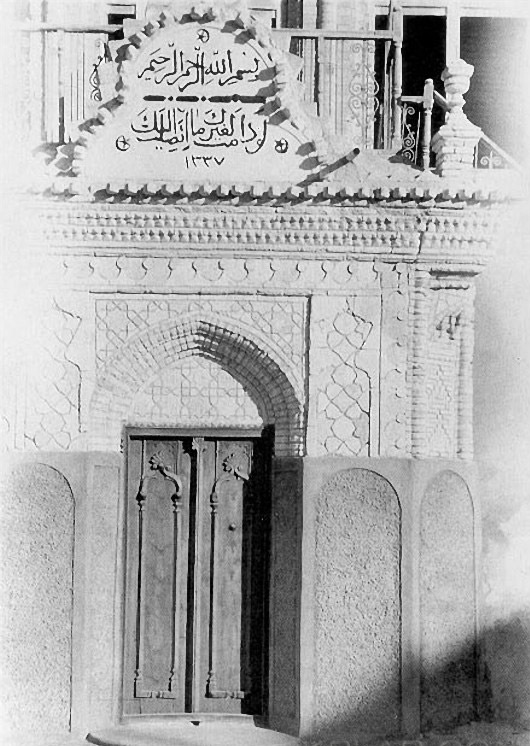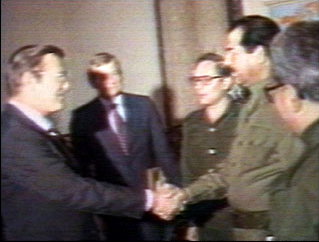|
Seif Palace
Seif Palace (Arabic, قصر السيف) is a palace in Kuwait City, Kuwait. Located opposite the Grand Mosque, one of Seif Palace's best-known features is the watch tower, covered in blue tiles and with a roof plated in pure gold. Local materials such as clay, rocks, limestone, wood and metals were used in its construction. Overview The tower of the Seif Palace received a direct hit from an incoming missile during the first Gulf War (1990–91), which destroyed the dial room. British clockmaker Smith of Derby Group replaced the iconic clock, and were the only non-US company to be awarded a contract in this reconstructive period.Craven, Maxwell (2011). The Smiths of Derby: A Journey Through Time. Derbyshire. . See also *Amiri Diwan of Kuwait The Amiri Diwan of Kuwait ( Al-Diwan Al-Amiri) serves as the royal court of the Emir of Kuwait. History Due to Kuwait's unique geographical position, it has been a major trading centre. This was especially evident during the reign of Sheikh ... [...More Info...] [...Related Items...] OR: [Wikipedia] [Google] [Baidu] |
Kuwait City
Kuwait City (; ) is the capital and largest city of Kuwait. Located at the heart of the country on the south shore of Kuwait Bay on the Persian Gulf, it is the political, cultural and economic center of the emirate, containing Kuwait's Seif Palace, government offices, and the headquarters of most Kuwaiti corporations and banks. the metropolitan area had roughly three million inhabitants (more than 70% of the country's population). The city itself has no administrative status. All six Governorates of Kuwait, governorates of the country comprise parts of the urban area, urban agglomeration, which is subdivided into numerous Areas of Kuwait, areas. In a narrower sense, ''Kuwait City'' can also refer only to the town's historic core, which nowadays is part of the Capital Governorate (Kuwait), Capital Governorate and seamlessly merges with the adjacent urban areas. Kuwait City's trade and transportation needs are served by Kuwait International Airport, Shuwaikh, Mina Al-Shuwaik (Sh ... [...More Info...] [...Related Items...] OR: [Wikipedia] [Google] [Baidu] |
Kuwait City
Kuwait City (; ) is the capital and largest city of Kuwait. Located at the heart of the country on the south shore of Kuwait Bay on the Persian Gulf, it is the political, cultural and economic center of the emirate, containing Kuwait's Seif Palace, government offices, and the headquarters of most Kuwaiti corporations and banks. the metropolitan area had roughly three million inhabitants (more than 70% of the country's population). The city itself has no administrative status. All six Governorates of Kuwait, governorates of the country comprise parts of the urban area, urban agglomeration, which is subdivided into numerous Areas of Kuwait, areas. In a narrower sense, ''Kuwait City'' can also refer only to the town's historic core, which nowadays is part of the Capital Governorate (Kuwait), Capital Governorate and seamlessly merges with the adjacent urban areas. Kuwait City's trade and transportation needs are served by Kuwait International Airport, Shuwaikh, Mina Al-Shuwaik (Sh ... [...More Info...] [...Related Items...] OR: [Wikipedia] [Google] [Baidu] |
Kuwait
Kuwait, officially the State of Kuwait, is a country in West Asia and the geopolitical region known as the Middle East. It is situated in the northern edge of the Arabian Peninsula at the head of the Persian Gulf, bordering Iraq to Iraq–Kuwait border, the north and Saudi Arabia to Kuwait–Saudi Arabia border, the south. With a coastline of approximately , Kuwait also shares a maritime border with Iran, across the Persian Gulf. Kuwait is a city-state, most of the country's population reside in the urban area, urban agglomeration of Kuwait City, the capital and largest city. , Kuwait has a population of 4.82 million, of which 1.53 million are Kuwaiti nationality law, Kuwaiti citizens while the remaining 3.29 million are Expatriates in Kuwait, foreign nationals from over 100 countries. Kuwait has the world's third List of sovereign states by immigrant and emigrant population, largest number of foreign nationals as a percentage of the population, where its citizens make up less th ... [...More Info...] [...Related Items...] OR: [Wikipedia] [Google] [Baidu] |
Grand Mosque (Kuwait)
The Grand Mosque () is the largest mosque in Kuwait. Its area spans , out of which the building itself covers . The main prayer hall is wide on all sides, and has teakwood doors. Natural lighting is provided by 144 windows. Overview and history The dome of the mosque is in diameter and high, and is decorated with the ''Asma al-Husna'', the 99 names of God. The mosque can accommodate up to 10,000 men in the main prayer hall, and up to 950 women in the separate hall for women. The mosque also contains a library of Islamic reference books and documents. The mosque also contains a 5-level car park underneath the eastern courtyard which can hold up to 550 cars. Construction of the mosque started in 1979, and the mosque was completed in 1986, on the first of Shawwal in 1407, or Eid ul-Fitr. The mosque's minaret, located at the northwest corner, resembles Andalusian architecture. Today it persists in a state of preservation and is open to prayers. Gallery File:Grand Mosque Kuwai ... [...More Info...] [...Related Items...] OR: [Wikipedia] [Google] [Baidu] |
Gold
Gold is a chemical element; it has chemical symbol Au (from Latin ) and atomic number 79. In its pure form, it is a brightness, bright, slightly orange-yellow, dense, soft, malleable, and ductile metal. Chemically, gold is a transition metal, a group 11 element, and one of the noble metals. It is one of the least reactivity (chemistry), reactive chemical elements, being the second-lowest in the reactivity series. It is solid under standard temperature and pressure, standard conditions. Gold often occurs in free elemental (native state (metallurgy), native state), as gold nugget, nuggets or grains, in rock (geology), rocks, vein (geology), veins, and alluvial deposits. It occurs in a solid solution series with the native element silver (as in electrum), naturally alloyed with other metals like copper and palladium, and mineral inclusions such as within pyrite. Less commonly, it occurs in minerals as gold compounds, often with tellurium (gold tellurides). Gold is resistant to ... [...More Info...] [...Related Items...] OR: [Wikipedia] [Google] [Baidu] |
Gulf War
, combatant2 = , commander1 = , commander2 = , strength1 = Over 950,000 soldiers3,113 tanks1,800 aircraft2,200 artillery systems , page = https://www.govinfo.gov/content/pkg/GAOREPORTS-PEMD-96-10/pdf/GAOREPORTS-PEMD-96-10.pdf , strength2 = 1,000,000+ soldiers (~600,000 in Kuwait)5,500 tanks700+ aircraft3,000 artillery systems , casualties1 = Total:13,488 Coalition:292 killed (147 killed by enemy action, 145 non-hostile deaths)776 wounded (467 wounded in action)31 tanks destroyed/disabled28 Bradley IFVs destroyed/damaged1 M113 APC destroyed2 British Warrior APCs destroyed1 artillery piece destroyed75 aircraft destroyedKuwait:420 killed 12,000 captured ≈200 tanks destroyed/captured 850+ other armored vehicles destroyed/captured 57 aircraft lost 8 aircraft captured (Mirage F1s) 17 ships sunk, 6 captured. Acig.org. Retrieved on 12 June 2011 , casualties2 = Total:175,000–300,000+ Iraqi:20,000–50,000 killed ... [...More Info...] [...Related Items...] OR: [Wikipedia] [Google] [Baidu] |
Smith Of Derby Group
Smith of Derby Group is a clockmakers, clockmaker based in Derby, England founded in 1856. Smith of Derby has been operated continuously under five generations of the Smith family. History John Smith (21 December 1813 - 1886)Horological Institute book review, January 2012 Chris McKay, MBHI, reviews the book 'The Smiths of Derby A Journey Through Time' for the 'British Horological Journal' became an apprentice to John Whitehurst in 1827. He went on to be the founder of a new clockmaking company in 1856, first establishing his business in premises at 27 Queen Street in Derby. [...More Info...] [...Related Items...] OR: [Wikipedia] [Google] [Baidu] |
Amiri Diwan Of Kuwait
The Amiri Diwan of Kuwait ( Al-Diwan Al-Amiri) serves as the royal court of the Emir of Kuwait. History Due to Kuwait's unique geographical position, it has been a major trading centre. This was especially evident during the reign of Sheikh Mubarak Al Sabah who ruled the country from 1896 to 1915. During this time, many delegations and merchants came to Kuwait to conduct business. Thus, the need for a palace that would be the reigning monarch's headquarters and government office became acute. In 1904, a decision was taken to build a palace overlooking the sea (al seif). It therefore became known as Seif Palace. Since then, Kuwait's rulers have developed and expanded the original palace. Sheikh Salim Al-Mubarak Al-Sabah was the first to renew the building in 1917. On its main gate, the words: “If it lasted for others it wouldn’t have passed to you” are inscribed. Sheikh Abdullah III Al-Salim Al-Sabah also carried out major alterations and additions in 1961, and by the end of ... [...More Info...] [...Related Items...] OR: [Wikipedia] [Google] [Baidu] |
Timeline Of Kuwait City
The following is a timeline of the history of Kuwait City, Al Asimah Governorate, Kuwait, and its metro surroundings. 18th century * Early 1700s Small fishing village of Grane or Kureyn under the control of the Bani Khalid Emirate, independent of Ottoman control since 1670 * 1750s Bani Utbah migrants establish the Sheikhdom of Kuwait under the auspices of the Bani Khalid * 17751779 Siege of Basra by Persia prompts Iraqi merchants and shipwrights to relocate to Kuwait City, along with trade routes from India, Muscat, and Persia to Baghdad, Aleppo, Smyrna, and Constantinople * 1792 E. India Company establishes Kuwaiti factory, tying the city's trade to East Africa 19th century * 1871 Al-Hasa Expedition returns Kuwait to Ottoman rule * 1875 Kuwait organized as part of Basra Vilayet * 1899 Treaty with the United Kingdom signed by Mubarak Al-Sabah 20th century * 1901 Population: c. 15,000 * 1904 Seif Palace expansion begins * 1912 U.S. mission established * 1915 S ... [...More Info...] [...Related Items...] OR: [Wikipedia] [Google] [Baidu] |
Palaces In Kuwait
A palace is a large residence, often serving as a royal residence or the home for a head of state or another high-ranking dignitary, such as a bishop or archbishop. The word is derived from the Latin name palātium, for Palatine Hill in Rome which housed the Roman Empire, Imperial residences. Most European languages have a version of the term (''palats'', ''palais'', ''palazzo'', ''palacio'', etc.) and many use it to describe a broader range of buildings than English. In many parts of Europe, the equivalent term is also applied to large private houses in cities, especially of the aristocracy. It is also used for some large official buildings that have never had a residential function; for example in French-speaking countries ''Palais de Justice'' is the usual name of important courthouses. Many historic palaces such as parliaments, museums, hotels, or office buildings are now put to other uses. The word is also sometimes used to describe an elaborate building used for public ent ... [...More Info...] [...Related Items...] OR: [Wikipedia] [Google] [Baidu] |







